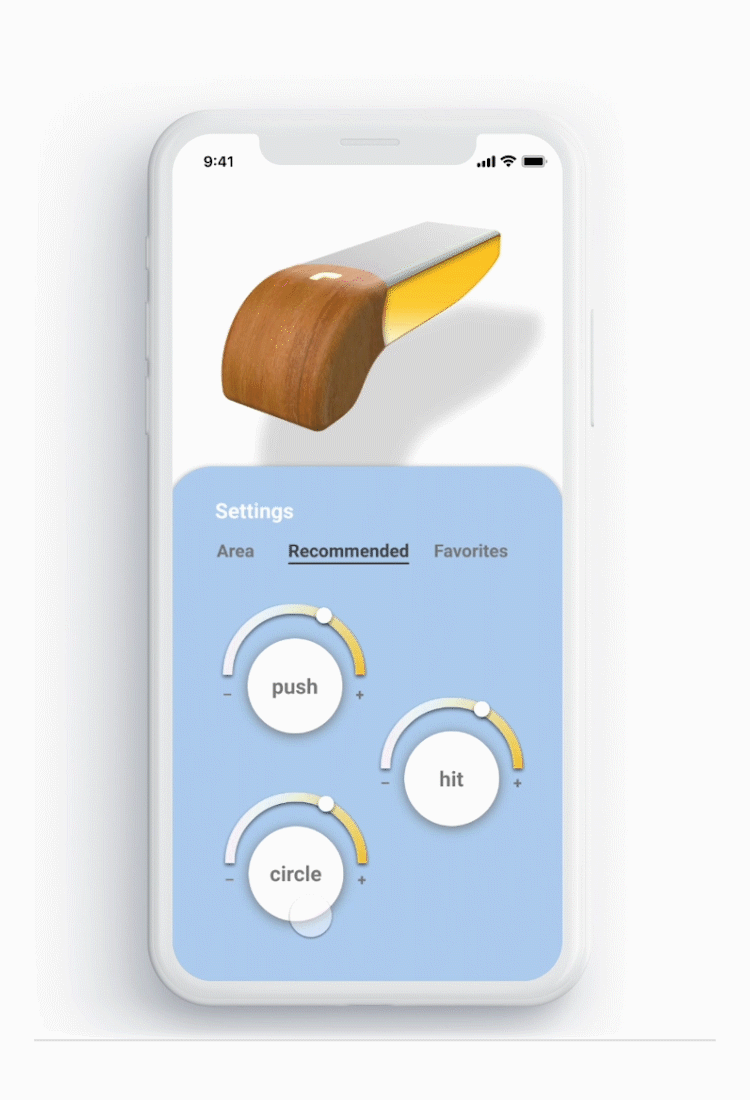
Project background
Process
Design for One, a design project that aims to provide an individual solution for people with physical disabilities. Emma, the expert our team interviewed is experiencing the problem of patellar tendinitis.
Our team came up with this solution through our research on Emma’s life through interviews and a diary study, in addition to secondary research on electromyography and hydro massaging. We abstracted Emma’s daily life through experience maps in order to uncover what problems were causing her the most issues. Then we brainstormed solutions around these problems, and after much group debating, we ended up combining two of our solutions, in order to create Knex.
Target audience
Emma is a driven, decisive, energetic busy industrial design student, who loves to move and plays lacrosse. Emma developed Patellar Tendonitis after a broken leg went unchecked for several years and is constantly suffering from soreness, knots, the inability to sit or stand for long periods of time, knee popping, and balance issues. Emma plays lacrosse and goes to rehab to help slow the deterioration of her knee, but her problems have caused a lot of hardship in her life.



A three-part system that can detect pain, analyze it, and help prevent it from occurring. It consists of a special lightweight brace, a bracelet, and a massager.

+

+

Brace
Tracks and analyzes the user muscle movement to send data to the system
Bracelet
Alerts the user if they haven’t moved in a while or if they are going to feel pain or acquire knots
Massager
Helps soothe the user’s pain by creating a massager based on their movement


Pain area
It shows the user's muscle area and level of pain throughout the whole week. The apps will recommend massage methods for users to relax the pain area.
Daily report
By analyzing the daily user routine, the apps will predict when the next possible pain point likely occurs and recommend position changes.


Movement
The brace will record the everyday movement of the user in the app.
The system will categorize the muscle data to different levels of stress.




Massager
The system will recommend the user a massage mode based on the data collected from the user’s pain levels and muscle stress.
The user can also use the suggested modes from their trainers and doctors for specific treatments.

Brace
The brace collects movement data by detecting electrical signals from around the knee area.
The brace then sends the data via Bluetooth to the kneed app which analyzes the data through AI to notify the user if they are standing or sitting for too long or if the user is likely to get a knot in the future.




Bracelet
The bracelet can also be used to analyze and predict when its user is likely to encounter pain. Whenever the user is in pain, they can press a button on the bracelet, and the bracelet will record the data.
Once the AI has analyzed enough data, it will start predicting when the user might encounter pain and glow beforehand to warn them about it.


Massager
The app connects to a special leg massager, which can give the user a recommended massage based on the data it has gathered.
The user can also create their own message if they so choose, and the user can also save the massage settings that they prefer on the app.
The massage’s heat, area of effect, intensity, massage type, and duration can be edited to the user’s preferences.





See more below ...











